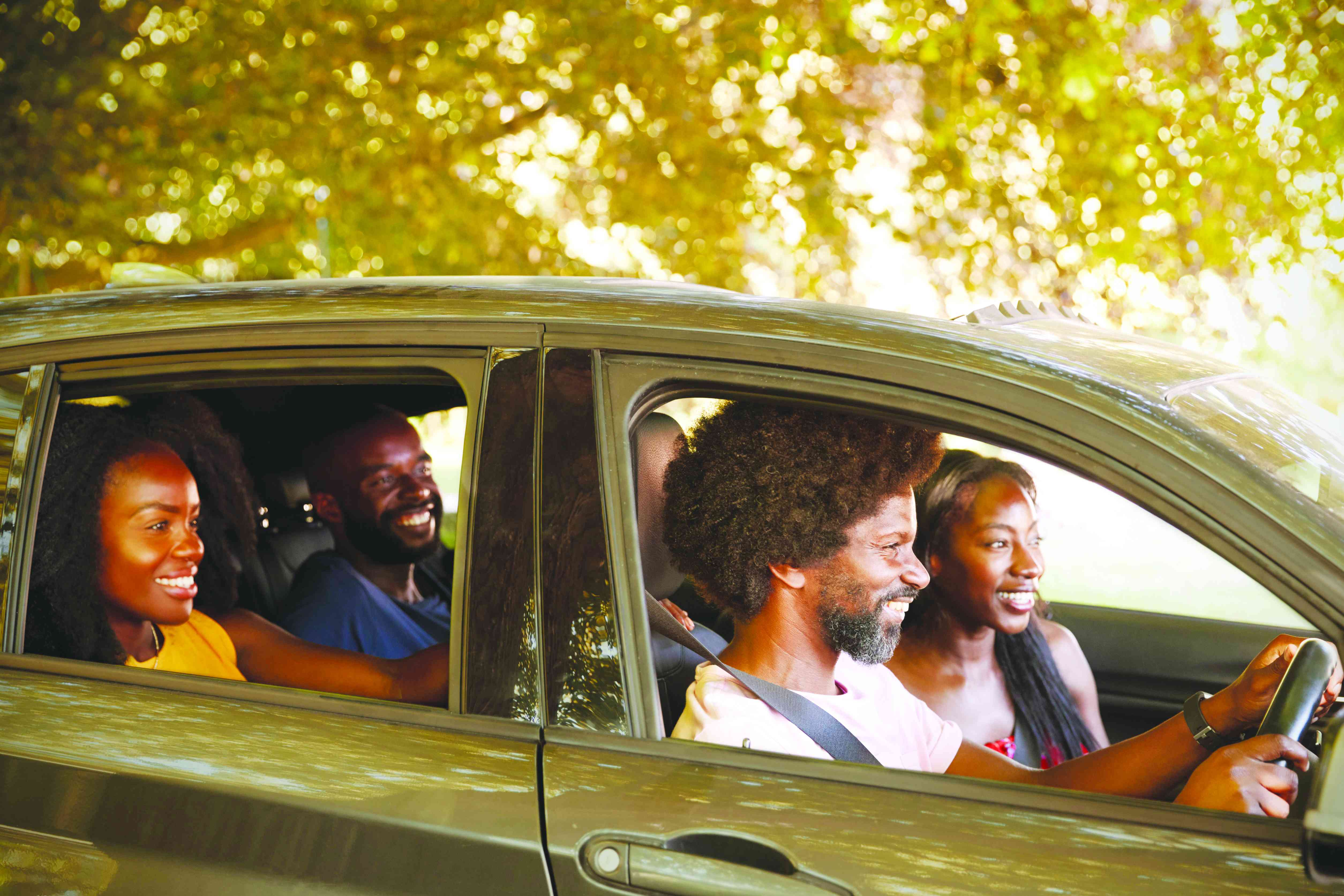
Having a passenger, who lacks the expected etiquette in your car, can be extremely annoying. Such behaviours include getting into someone’s car and turning on the aircon, radio, and opening the windows; you name it.
I have come across people who actually move around with music to play in people’s cars. Passenger etiquette in the car is an essential yet often overlooked aspect of social behaviour that contributes to a safe and pleasant travel experience.
Whether commuting in a private vehicle, riding in a taxi, or sharing a trip with friends, passengers play a significant role in ensuring the journey is stress-free for everyone involved.
Poor passenger behaviour — such as being too loud, disrespecting personal boundaries, or disregarding safety measures — can lead to unnecessary tension and even hazardous situations on the road.
On the contrary, polite and mindful conduct fosters harmony, and enhances the overall travel experience.
Respect for the driver
One of the most critical aspects of passenger etiquette is demonstrating respect for the driver, whose responsibility is to ensure the car reaches its destination safely.
Passengers must recognise that the driver demands an environment free from unnecessary distractions. For instance, engaging the driver in excessive conversation can divert their focus from the road, increasing the risk of accidents.
- Zupco doubles fares
- Bus operators pledge to end crisis
- Mixed reactions to police blitz
- Zupco drivers allege tribalism
Keep Reading
Offering support, such as navigating directions when asked or refraining from unsolicited advice, is a way to show consideration for the driver’s task.
Following the driver’s instructions is another vital element of respect. Whether it involves fastening seatbelts, adjusting seating arrangements, or complying with speed preferences, passengers should cooperate without resistance.
Disregarding these instructions not only undermines the driver’s authority but can also compromise the safety of everyone in the vehicle.
For example, ignoring a request to keep noise levels low can reduce the driver’s ability to hear important signals, such as sirens or horns from other vehicles.
Additionally, passengers should be mindful not to interfere with the car’s controls. Passengers may perceive touching the radio, air conditioning, or other settings without permission as intrusive and disrespectful.
The driver bears ultimate responsibility for the vehicle’s operation, and they should make any adjustments at their discretion. Simple courtesies, such as asking before changing the music or opening a window, reflect a passenger’s regard for the driver’s preferences and authority.
Maintaining personal boundaries
Respecting personal boundaries is another cornerstone of proper passenger etiquette. When sharing a vehicle, passengers enter a shared space where mutual consideration is key to ensuring a comfortable journey for everyone.
This begins with respecting physical space. Crowding another passenger unnecessarily, spreading belongings across seats, or invading someone’s personal area can make others feel uncomfortable or unwelcome.
Passengers should be mindful of how much space they occupy and adjust accordingly to maintain harmony within the car.
Another important aspect of maintaining personal boundaries involves refraining from using or moving others’ belongings without permission. Whether it is a jacket placed on a seat or a bag stored in the car, passengers should ask before handling anything that does not belong to them.
This simple act of courtesy helps foster mutual respect and prevents misunderstandings or conflicts. Moreover, passengers should avoid imposing their personal habits on others. For example, eating foods with strong odours or wearing overpowering fragrances can create discomfort for others in the enclosed environment of a car.
Some individuals may have allergies or sensitivities, and being considerate of these possibilities reflects a high level of social awareness. Similarly, passengers should abstain from engaging in behaviours that could be considered inappropriate, such as putting their feet on the dashboard or reclining seats excessively without the driver’s or other passengers’ consent.
Personal boundaries also extend to respecting the privacy of fellow passengers.
Engaging in overly intrusive conversations or asking personal questions can lead to unease. It is important to gauge the social dynamics in the car and adopt a polite and neutral tone when conversing.
In a professional setting, such as a rideshare or carpool for work, maintaining professionalism further reinforces respect for others’ space and boundaries.
Cleanliness, tidiness
Maintaining cleanliness and tidiness within a vehicle is a fundamental aspect of passenger etiquette that reflects consideration for both the driver and fellow passengers.
A car is often a shared space, and keeping it clean ensures a comfortable and hygienic experience for everyone. Passengers should avoid bringing food or beverages that could spill and cause stains or odours.
If eating during the ride is unavoidable, it is courteous to ask the driver for permission beforehand and ensure that any resulting mess is cleaned up promptly.
Proper disposal of trash is another critical component of tidiness. Passengers should refrain from leaving wrappers, bottles, or other waste behind in the car.
Carrying a small bag for personal trash or politely asking the driver where to dispose of waste demonstrates thoughtfulness and respect for the shared environment.
For instance, leaving litter in a ride-share vehicle could inconvenience the next passenger and reflect poorly on the individual responsible. Also, passengers should watch their shoes, especially if they have mud, dirt, or debris on them. Placing dirty shoes on seats or other clean surfaces within the car is inconsiderate and can cause unnecessary cleaning work for the driver.
A simple gesture, such as wiping off shoes before entering the vehicle, can go a long way in preserving the car’s condition.
Noise levels, conversations
Maintaining appropriate noise levels is a crucial aspect of passenger etiquette that ensures the driver can concentrate and other passengers can feel comfortable.
Excessive noise, whether from loud conversations, music, or phone calls, can disrupt the driver’s focus, increasing the risk of accidents. Passengers should mind their voice volume and how their actions may affect the car’s atmosphere.
Passengers should keep their conversations at a moderate volume. Engaging in heated debates, shouting, or laughing loudly can create an unpleasant environment and distract the driver. If a phone call is necessary during the trip, it is courteous to keep it brief and at a low volume. Using headphones for private conversations or media consumption is another simple way to minimise disruptions and show consideration for others in the car.
Music is another common point of contention in vehicles. Although listening to music can enhance the travel experience, passengers should defer to the driver’s preferences regarding genre and volume.
In ride-shares or carpools, it is polite to ask before adjusting the radio or playing personal playlists. Creating a collaborative atmosphere by allowing everyone to contribute to the selection can also help maintain harmony.
Please avoid moving around with your music so as to play it in people’s cars.
Respecting noise levels extends to children and pets if they are part of the journey. Parents should make sure their children engage in quiet activities and avoid any disruptive behaviour. Similarly, passengers travelling with pets must take responsibility for keeping them calm and well-behaved throughout the trip to avoid creating unnecessary distractions.
Safety practices
Safety is the foundation of passenger etiquette because it affects everyone in the vehicle. One of the simplest yet most important safety measures is wearing a seatbelt. Whatever the distance or seat position, passengers should buckle up.
In an accident, seatbelts protect passengers and can result in legal action against the driver. Passengers should also avoid distracting the driver with unnecessary actions or requests.
For example, reaching over to grab items from the dashboard or obstructing the rearview mirror can interfere with the driver’s ability to operate the vehicle safely.
Instead, passengers should help when needed, such as helping to adjust navigation settings or retrieving items in a way that does not disrupt the driver’s focus.
In addition, passengers should refrain from engaging in risky behaviours, such as leaning out of windows or standing up in moving vehicles.
These actions can lead to serious injuries and create hazardous situations for other road users. Following the driver’s instructions regarding safety procedures, such as keeping hands and feet inside the car, is a basic yet essential form of compliance.
My decision
By observing these safety practices, passengers demonstrate responsibility and contribute to the overall security of the journey.
Passenger etiquette is a vital element of shared travel experiences, fostering safety, comfort, and mutual respect among everyone in the vehicle.
By respecting the driver, maintaining personal boundaries, ensuring cleanliness, regulating noise levels, and adhering to safety practices, passengers contribute positively to the overall journey.
Each of these principles reflects a commitment to consideration and responsibility, which are essential for creating a harmonious environment in any shared space.
Ultimately, good passenger behaviour is more than just a matter of politeness — it is a means to ensure the well-being of all individuals involved.
Whether on a casual car ride with friends or in a professional ride-sharing arrangement, passengers, who prioritise these values not only make the trip more enjoyable but also set a standard of respect and cooperation for others.
Adopting these practices can lead to safer roads and more pleasant travel experiences, reinforcing the importance of thoughtful conduct in every journey.











